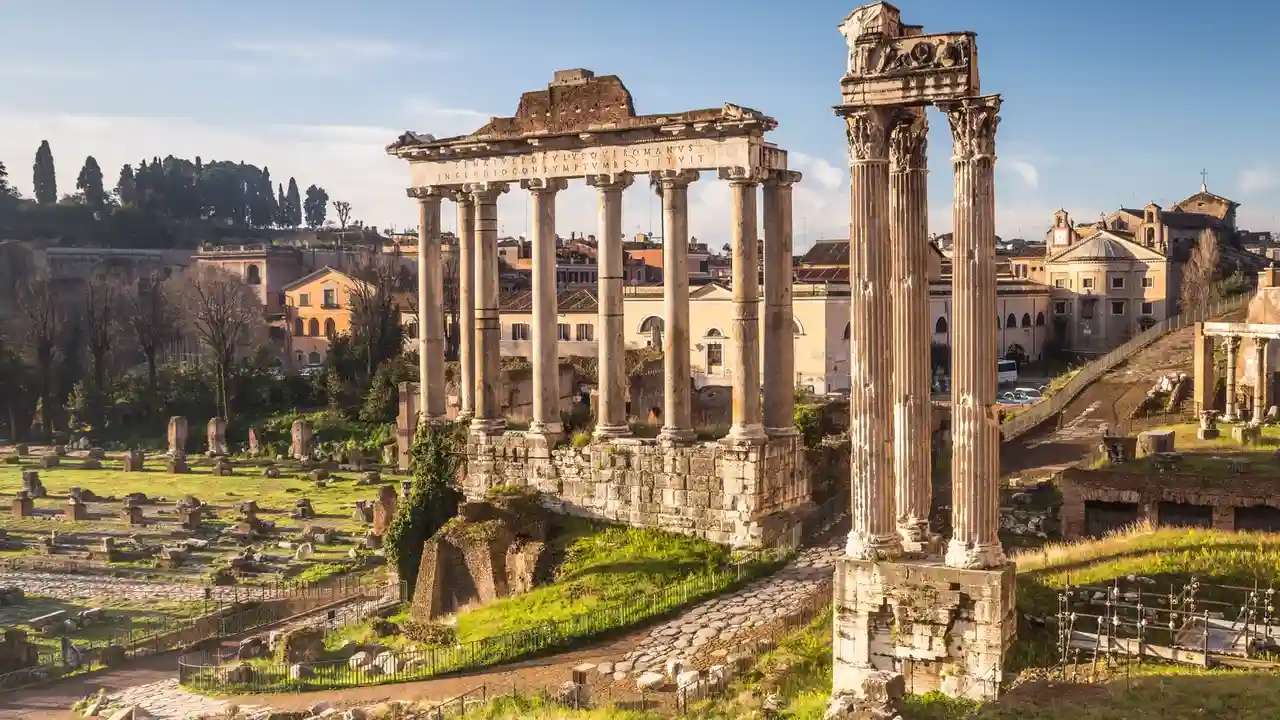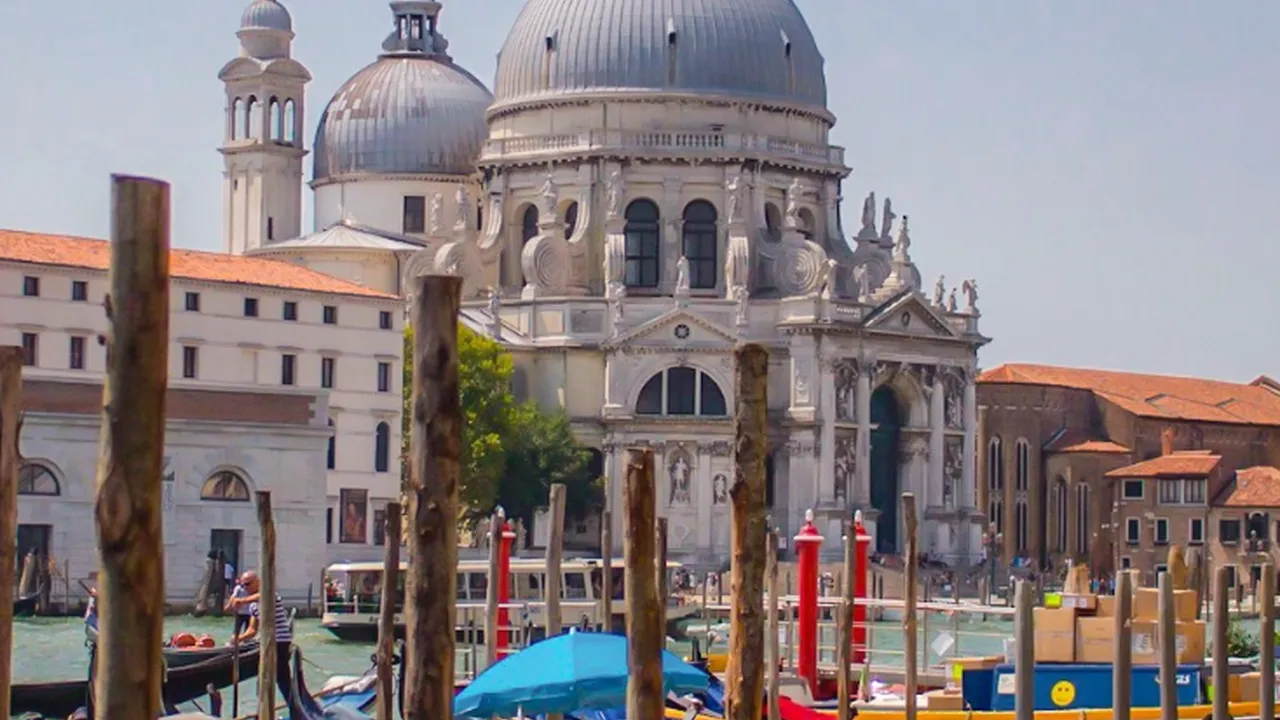Italy Travel Checklist: Ensure a Smooth Trip

Use this checklist to ensure a smooth and well-prepared trip to Italy. Review essential tasks before you leave, including booking flights, accommodation, and activities. Enjoy a stress-free vacation.
Pre-Trip Planning: Your Italy Travel Checklist Foundation
Okay, so you're dreaming of pasta, ancient ruins, and maybe a gondola ride or two? Awesome! But before you can say "Ciao Bella," let's make sure you've got all your ducks in a row. This isn't just a list; it's your sanity saver, your stress reliever, and your ticket to an unforgettable Italian adventure. Think of it as your pre-trip Italian espresso shot – it'll get you going!
Flights and Accommodation: Securing Your Spot in Italy
First things first: flights and accommodation. Don't be a procrastinator! Booking early, especially if you're traveling during peak season (summer, holidays), can save you a ton of money. Websites like Skyscanner, Google Flights, and Kayak are your friends for finding the best flight deals. For accommodation, consider Booking.com, Airbnb, or even smaller, family-run hotels (agriturismi) for a more authentic experience. Read reviews carefully! You want to know if that charming B&B really *is* charming, or just charmingly located next to a noisy construction site.
Passport and Visa: Are You Ready for Entry?
This might seem obvious, but double-check your passport's expiration date. Most countries require at least six months of validity. If you're a US citizen staying less than 90 days, you generally don't need a visa for Italy (as part of the Schengen Area). But always confirm the latest regulations on the US Department of State website. Don't get caught out at the airport!
Travel Insurance: Protecting Your Italian Dream
Okay, nobody *wants* to think about things going wrong, but travel insurance is a must. It covers everything from medical emergencies and lost luggage to trip cancellations. Companies like World Nomads, Allianz, and Travel Guard offer comprehensive travel insurance plans. Read the fine print to understand what's covered and what's not. Consider coverage for pre-existing conditions and adventure activities if you plan on hiking or skiing.
Currency and Banking: Managing Your Money in Italy
Italy uses the Euro (€). Let your bank know you're traveling to avoid having your card blocked. Consider getting a travel credit card with no foreign transaction fees. You can also withdraw Euros from ATMs in Italy, but be aware of potential fees. A mix of cash and card is usually a good strategy. Small towns and local markets may prefer cash. For larger purchases, credit cards are widely accepted.
Packing Essentials: What to Bring for Your Italian Getaway
Packing light is key, but don't forget the essentials. Comfortable walking shoes are a must – you'll be doing a lot of exploring! Pack versatile clothing that can be layered, as the weather can be unpredictable. A universal adapter is essential for charging your electronics. Don't forget sunscreen, sunglasses, and a hat, especially if you're traveling during the summer. And of course, your camera to capture all those amazing memories!
Communication: Staying Connected in Italy
Consider getting an international SIM card or a travel eSIM for your phone. This will allow you to access data for maps, translation apps, and staying in touch with family and friends. Companies like Google Fi and Airalo offer affordable international data plans. You can also rely on Wi-Fi, which is available in most hotels, cafes, and restaurants. However, be aware that public Wi-Fi may not be secure.
Transportation: Getting Around Italy with Ease
Plan your transportation in advance, especially if you're traveling during peak season. Book train tickets online through Trenitalia or Italo. Consider renting a car if you plan on exploring the countryside, but be aware of traffic and parking challenges in major cities. Public transportation is generally efficient in cities like Rome, Florence, and Milan. Consider purchasing a travel pass for unlimited rides.
Activities and Tours: Pre-Booking for Peace of Mind
Pre-book popular tours and activities, especially if you're traveling during peak season. This will guarantee your spot and save you time waiting in line. Websites like GetYourGuide, Viator, and Airbnb Experiences offer a wide range of tours and activities. Consider booking skip-the-line tickets for popular attractions like the Colosseum and the Vatican Museums.
Emergency Contacts and Information: Being Prepared for the Unexpected
Keep a list of emergency contacts and important information, such as your passport number, travel insurance policy number, and local emergency numbers. Share this information with a trusted friend or family member back home. Download offline maps and translation apps to your phone in case you don't have access to data.
Learn Basic Italian Phrases: Showing Respect and Connecting with Locals
Learning a few basic Italian phrases can go a long way in showing respect and connecting with locals. "Buongiorno" (good morning), "Grazie" (thank you), and "Prego" (you're welcome) are a good start. Don't be afraid to try – Italians appreciate the effort! Even a simple "Parla inglese?" (Do you speak English?) can be helpful.
Download Essential Travel Apps: Navigating Italy Like a Pro
There are tons of travel apps that can make your trip easier and more enjoyable. Google Maps is essential for navigation. Google Translate can help you communicate with locals. Rick Steves Audio Europe offers audio tours of popular attractions. And of course, your airline and accommodation apps for managing your bookings.
Confirm Reservations and Bookings: Double-Checking Your Itinerary
A week or two before your trip, confirm all your reservations and bookings. This includes flights, accommodation, tours, and activities. Double-check the dates, times, and locations. It's always better to be safe than sorry! Contact the providers directly if you have any questions or concerns.
Final Checklist and Last-Minute Preparations: Ensuring a Stress-Free Departure
The day before your trip, review this checklist one last time. Pack any last-minute items, such as toiletries and medications. Charge your electronics and download any necessary documents to your phone. Get a good night's sleep and prepare for your Italian adventure! Make sure someone knows your itinerary, and leave a copy of important documents with them.
Product Recommendations for a Smooth Italian Trip: Gear Up for Adventure
Beyond the essentials, a few specific products can really elevate your Italian travel experience. Let's look at some recommendations, their uses, comparisons, and price points.
Travel Backpack: Osprey Farpoint 40 vs. Tortuga Setout
A good travel backpack is crucial for navigating airports, trains, and cobblestone streets. The Osprey Farpoint 40 is a popular choice for its comfortable harness, durable construction, and carry-on size compliance. It features a zip-away harness for easy storage and multiple compartments for organization. The Tortuga Setout is another excellent option, known for its clamshell opening, which makes packing and unpacking a breeze. It also has a dedicated laptop compartment and a comfortable suspension system.
Use Case: Both backpacks are ideal for travelers who want to avoid checked baggage fees and prefer the freedom of a backpack over a rolling suitcase. They're perfect for city hopping, hiking, and exploring off-the-beaten-path destinations.
Comparison: The Osprey Farpoint 40 is slightly lighter and more compact, while the Tortuga Setout offers more internal organization and a more comfortable carry. The Osprey is often considered slightly more durable for rougher travel conditions.
Price: Osprey Farpoint 40: $160 - $180. Tortuga Setout: $200 - $230.
Portable Charger: Anker PowerCore 10000 vs. Mophie Powerstation PD
Don't let a dead phone ruin your photo ops! A portable charger is a lifesaver for long days of sightseeing. The Anker PowerCore 10000 is a compact and affordable option that can charge your phone multiple times. The Mophie Powerstation PD offers faster charging speeds and a higher capacity, making it ideal for charging tablets and other devices.
Use Case: Both chargers are perfect for keeping your devices powered up on the go. They're essential for navigating with GPS, taking photos, and staying connected with family and friends.
Comparison: The Anker PowerCore 10000 is more affordable and compact, while the Mophie Powerstation PD offers faster charging and a higher capacity. The Mophie is a better choice if you need to charge multiple devices or require fast charging.
Price: Anker PowerCore 10000: $25 - $30. Mophie Powerstation PD: $40 - $50.
Travel Adapter: EPICKA Universal Travel Adapter vs. BESTEK Universal Travel Adapter
Italy uses Type C, F, and L plugs, so you'll need a travel adapter to charge your devices. The EPICKA Universal Travel Adapter is a versatile option that works in most countries around the world. It features multiple USB ports and a surge protector. The BESTEK Universal Travel Adapter also offers multiple USB ports and a built-in power converter, making it ideal for charging laptops and other high-power devices.
Use Case: Both adapters are essential for charging your devices in Italy and other countries. They're perfect for travelers who want a single adapter that works worldwide.
Comparison: The EPICKA Universal Travel Adapter is more compact and affordable, while the BESTEK Universal Travel Adapter offers a built-in power converter. The BESTEK is a better choice if you need to charge high-power devices or travel frequently to countries with different voltage standards.
Price: EPICKA Universal Travel Adapter: $20 - $25. BESTEK Universal Travel Adapter: $30 - $40.
Comfortable Walking Shoes: Allbirds Wool Runners vs. Brooks Ghost 14
Your feet will thank you for investing in comfortable walking shoes. The Allbirds Wool Runners are lightweight, breathable, and made from sustainable materials. They're perfect for walking around cities and exploring historical sites. The Brooks Ghost 14 are designed for running but are also incredibly comfortable for walking. They offer excellent cushioning and support, making them ideal for long days on your feet.
Use Case: Both shoes are perfect for walking around cities, exploring historical sites, and hiking on easy trails. They're essential for travelers who want to stay comfortable and avoid foot pain.
Comparison: The Allbirds Wool Runners are more lightweight and breathable, while the Brooks Ghost 14 offer more cushioning and support. The Allbirds are a better choice for warm weather, while the Brooks are a better choice for long days on your feet.
Price: Allbirds Wool Runners: $100 - $110. Brooks Ghost 14: $130 - $140.
Noise-Canceling Headphones: Sony WH-1000XM5 vs. Bose QuietComfort 45
Block out distractions and enjoy your music or podcasts with noise-canceling headphones. The Sony WH-1000XM5 are widely regarded as the best noise-canceling headphones on the market. They offer excellent sound quality, comfortable earcups, and long battery life. The Bose QuietComfort 45 are another excellent option, known for their comfortable fit and balanced sound profile.
Use Case: Both headphones are perfect for blocking out distractions on flights, trains, and in crowded tourist areas. They're essential for travelers who want to relax and enjoy their audio content.
Comparison: The Sony WH-1000XM5 offer slightly better noise cancellation and sound quality, while the Bose QuietComfort 45 are more comfortable for some users. The Sony are a better choice for audiophiles, while the Bose are a better choice for those who prioritize comfort.
Price: Sony WH-1000XM5: $350 - $400. Bose QuietComfort 45: $300 - $350.
:max_bytes(150000):strip_icc()/277019-baked-pork-chops-with-cream-of-mushroom-soup-DDMFS-beauty-4x3-BG-7505-5762b731cf30447d9cbbbbbf387beafa.jpg)






